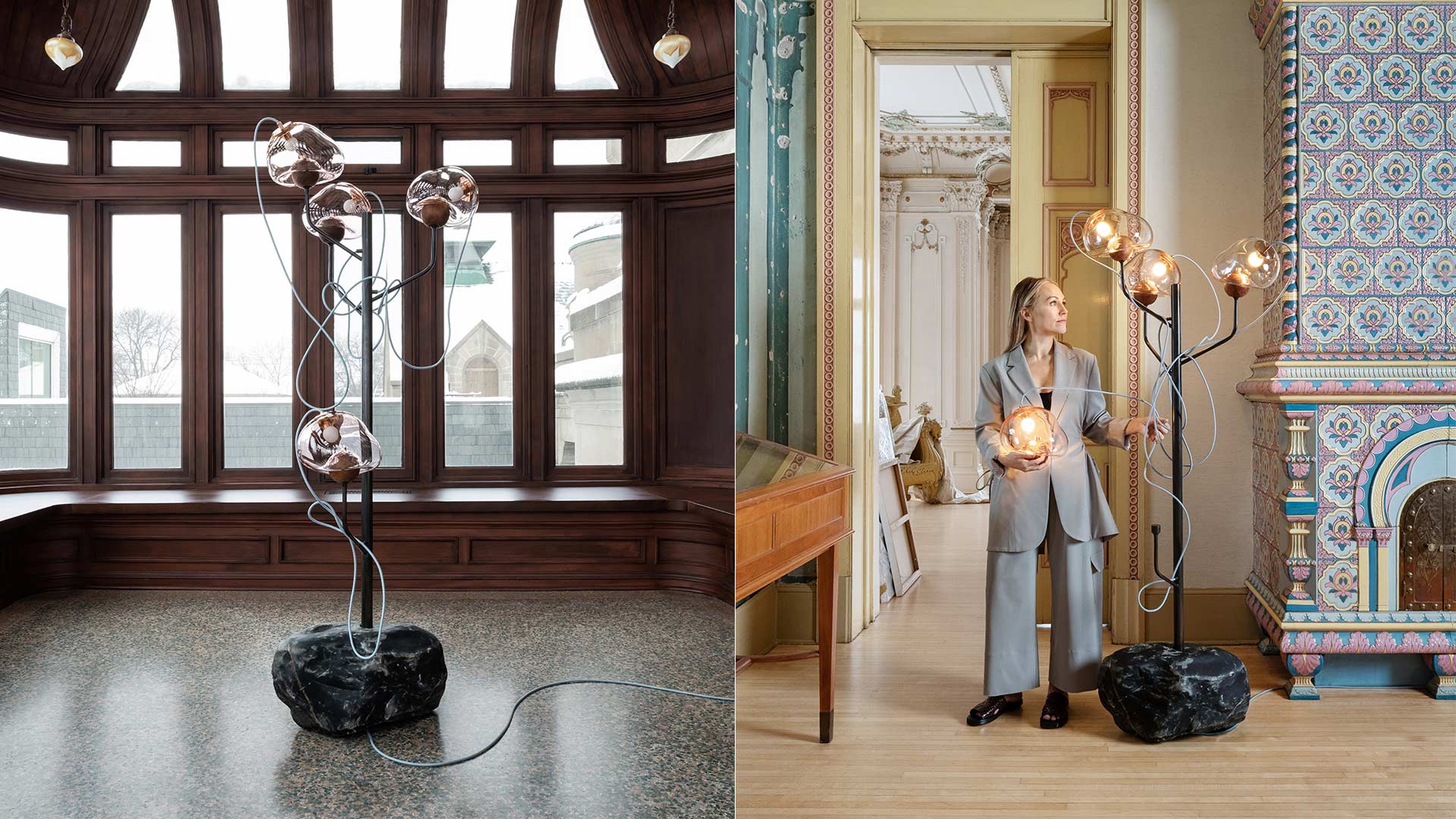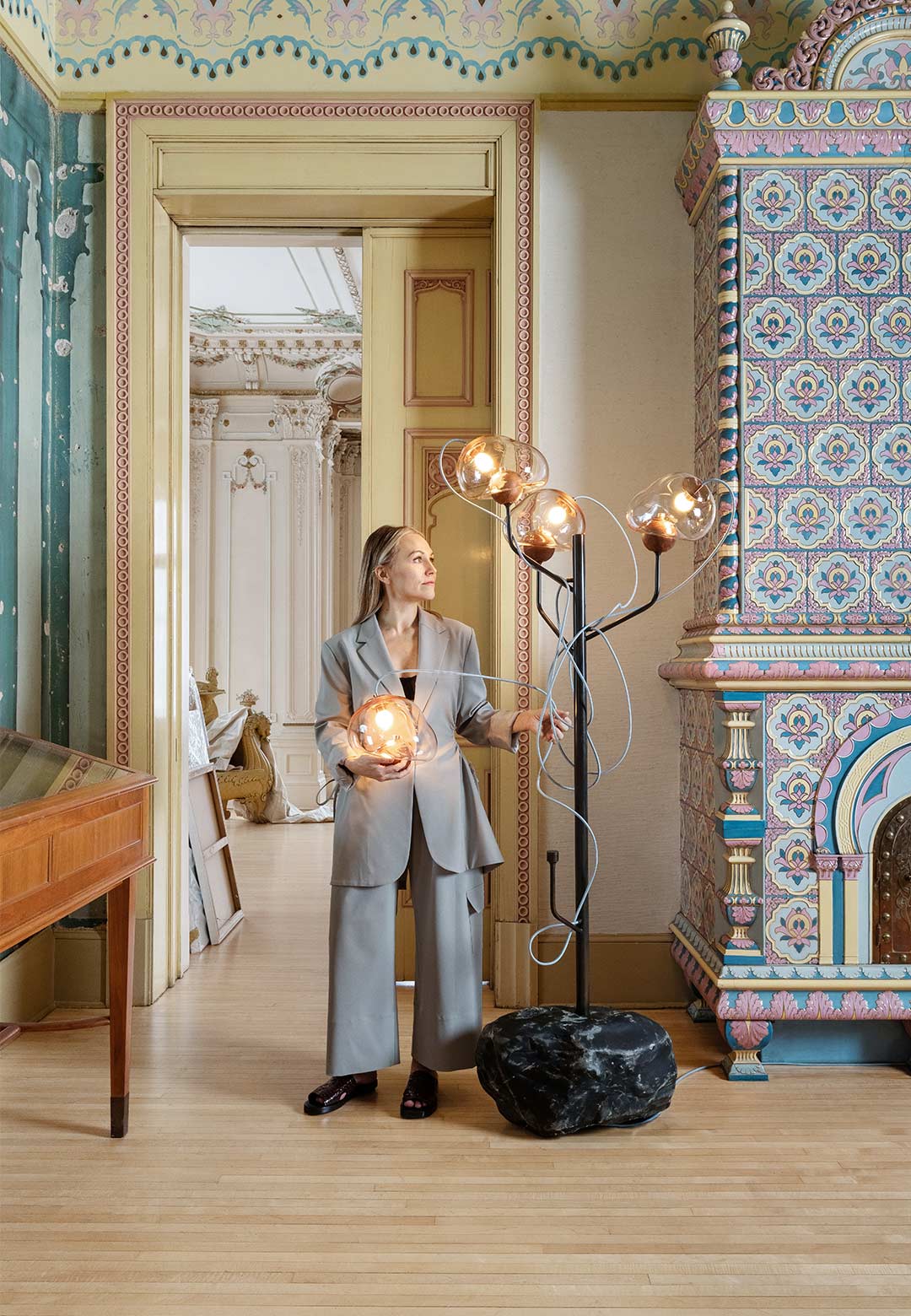Interactive lighting fixtures serve as illuminating catalysts, seamlessly transcending the boundaries of physical spaces by harmonising luminescence and ambience with the user experience, thus metamorphosing the very fabric of spatiality into immersive and transformative experiences. In the vibrant city of Minneapolis in Minnesota, the US, with their shared passion for design and thought-provoking creations, two local creatives joined forces to craft a lighting design collection crafted not only to illuminate spaces but to also ignite meaningful conversations. The newly unveiled collection, born from the collaborative minds of Jackson Schwartz, the head of the lighting company Hennepin Made and Victoria Sass, the founder of the interior design studio Prospect Refuge, exudes an essence of the American Midwest.
"Prospect Refuge Studio x Hennepin Made’s ‘Ontologia’ collection is a meditation on light, form, and philosophy. A meeting of Midwest minds, ‘Ontologia’ is the debut lighting collection of Victoria Sass (founder and design director of Prospect Refuge Studio). The collection muses on the dramatic seasonal shifts of the midwest’s climate and is reminiscent of organic, natural shapes, accentuated with subtle yet striking, wooden hardware," their press statement mentions.
Hennepin Made was conceived with the intention of pushing boundaries of skill and materials, to birth innovative forms that challenge conventional norms. According to Schwartz, every step of the prototyping process unfolded within the confines of the Hennepin Made studio, encapsulating the essence of resourcefulness and utilising available materials—a testament to the Midwestern values of making the most of what is at hand. These lighting pieces serve as not just functional objects, but as catalysts for deeper exploration and introspection. They invite viewers to contemplate the interplay between simplicity and wonder, encouraging a dialogue that transcends mere aesthetics. In Schwartz's words, “This amalgamation of honouring roots while challenging established norms and comfort zones is precisely what makes collaborating with PRS such a delightful experience.” Schwartz and Sass have not only harnessed the spirit of the region but have also crafted a captivating narrative that celebrates the indelible imprint of the Midwest on their design journey.
By considering how the potential of lighting designs goes far beyond its utilitarian role, Sass ignites a rich interplay between light, form, and spatiality. Each lighting installation becomes an opportunity for exploration, as the interaction between shadows and illumination, textures and colours, weaves together an immersive tapestry of sensory experiences, reimagining the role of lighting, and infusing spaces with an undeniable sense of wonder, beauty, and contemplation.
Not only are the finishes designed to evolve and display evidence of human touch over time, but they also encourage tactile exploration. These blown-glass lamp designs are meant to be twisted, turned, removed, and replaced, and even the arrangement of cords invites a sense of experimentation and customization. The collection beckons individuals to step into a realm of creativity, where they can shape and mould their lighting experience to suit their preferences. Furthermore, a fascinating evolutionary narrative is inherent in the forms of these product designs. Beginning with a single-celled structure as an elemental beginning, the fixtures, including table lamps and floor lamps, gradually evolve, resembling clusters of fungi with their intricate patterns and delicate textures. The designs then blossom further into branching forms reminiscent of flourishing plants, symbolizing vitality and expansion. Thus the collection is named ‘Ontologia' which means the study of existence. “We playfully explored what it means for something to ‘exist’” says Sass.
These elaborate structures, with their interwoven cords and dynamic configuration, embody a sense of sophistication and a testament to the power of collaboration. The collaboration between the product designers not only celebrates the expressive potential of colour and form but also invites users to become co-creators, actively engaging with the pieces and leaving their mark upon them. It invites us to reflect on the special bonds we form with certain possessions throughout our lives. They become companions.
The designs are organically created by using the traditional technique of hand-blown glass. Each piece undergoes a meticulously controlled process, focusing on achieving the desired size of the form. The whole interplay of materials endows each light with its own distinct personality. They transform the space by being dynamic and playful by themselves.
When asked if there are any sustainability-related aspects that can be highlighted in this context, Sass believes that forming a meaningful relationship and shared history with our belongings is a key to sustainable ownership. By regarding our spaces and possessions as family members rather than fleeting trends, we can appreciate their unique personalities and embark on a lifelong journey with them. Objects that challenge us and foster a dialogue become lasting companions, not only for ourselves but also for future generations. For Schwartz, the use of high-quality materials and artisan craftsmanship further emphasises the importance of longevity and care in creating sustainable objects. Our attachment to and understanding of our belongings are crucial in cultivating a more sustainable relationship with our material existence on the planet.






 Sign in with email
Sign in with email










What do you think?